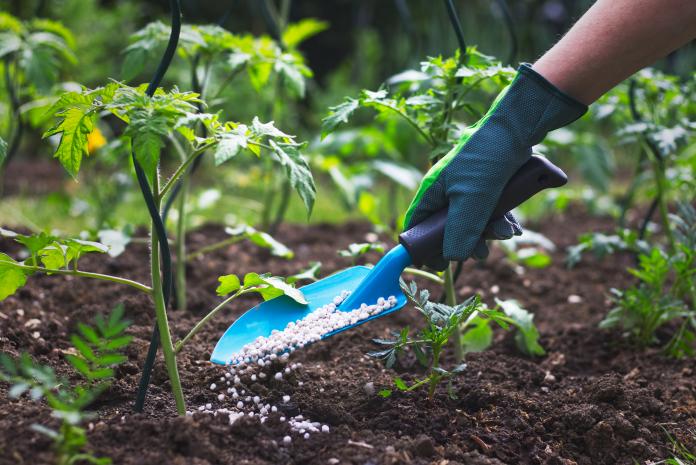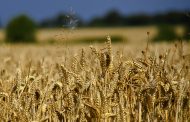It is really necessary to improve the soil in autumn. During this period, you can successfully change its acidity and moisture content, fluff inside, improve fertility. And what exactly and in what doses to add to the soil for this purpose, we will tell you.
Kyiv. Ukraine. Ukraine Gate – September 25, 2021 – Agriculture
In autumn, fertilizers are usually applied for digging (during the winter they will have time to become part of the organometal complex of the soil, make it more fertile, and will feed the plants all next season), and additives that improve the soil. What and how? We will tell below.
Apply manure in the fall
First of all, in the fall it is necessary to make manure into the soil for digging (plowing). This is a universal natural fertilizer rich in calcium and magnesium, which help reduce soil acidity. Potassium and phosphorus are contained in manure in the form most accessible to plants, and nitrogen is stored in the soil for a long time. The microorganisms contained in the manure contribute to the formation of humus.
Under excavation on 1 sq.m. m of sandy soil requires about 2-3 kg of organic fertilizer per 1 sq. km. m of clay soil – more than 6-8 kg.
How to make manure in the fall? It is distributed on the surface of the soil and immediately dug with the ground to a depth of a shovel bayonet (15-20 cm). Unlike spring fertilization, when manure must be overcooked so that it does not burn young plants due to the high content of uric acid and other aggressive substances, fresh manure can be applied in autumn, as there is no such danger. During the winter, the manure will soak in moisture, mix well with the soil and begin to rot. The soil will become looser and more fertile, as the accumulation of the necessary substances in it will be more active, and the plants will be fed with micronutrients gradually, over the next 6-8 months. Therefore, autumn fertilization is considered more useful than spring fertilization. In addition, weed seeds contained in manure,
Not only fruit trees and bushes can be fed with manure in autumn. It is useful to bring it to future garden beds and greenhouses.
We import peat in autumn
Autumn application of a substance that improves the soil, such as peat, will also be a good option. It has little effect on soil nutrient saturation (it contains only enough nitrogen, of which plants absorb only 3-5%), but helps to improve the physical properties of the soil: it makes it looser, warmer, porous, air and moisture permeable. The most strikingly improving properties of peat are manifested on poorly cultivated sandy and heavy clay soils.
Only low-decomposed lowland peat is suitable for beds, horse peat and transitional peat are not suitable for this purpose.
If the soil is very heavy or poor, it is most rational to apply peat twice – in autumn and spring. With autumn digging, make 4-5 kg ?? of peat per 1 sq. Km. m of soil, and in the spring repeat the same dose and again carefully dig the ground.
Apply humus and compost in the fall
Compost is an affordable and useful fertilizer obtained from food and vegetable waste. Humus is also a universal tool for improving soil structure and its properties.
Humus and compost can also be made in spring and autumn at the rate of 1-2 buckets per 1 sq. Km. m. During the autumn application of some nutrients from these fertilizers can be washed away by meltwater, but the organic matter for the winter is soaked with moisture, finally “ripens” and mixes easily with the soil, willingly and evenly giving the remaining.
The exception is compost from wood waste – shavings, bark, branches – which is laid only in autumn during the digging of the garden. If it is applied to the soil in the spring, the decomposition process will “pull” the lion’s share of nutrients, depriving them of plants.
We apply mineral fertilizers in autumn
But not only the application of organic matter in the fall is good for the soil. To make it more fertile for the new season, in September-October it is worth mentioning mineral fertilizers for the garden and vegetable garden. Phosphorus, potassium, and even nitrogen (albeit to a much lesser extent) – all these nutrients will help increase crop yields, prolong their fruiting period, support metabolism and withstand adverse weather conditions. In addition, it will be useful even in the spring, when trees and shrubs are in dire need of nutrients.
The time of application of fertilizers in the fall for different plants may vary, before using the additives, read the agricultural techniques of each crop.
Mineral fertilizers are usually applied in liquid form (if dry, then after applying the plants must be watered). They should contain phosphorus, potassium, and calcium, which strengthen plant immunity and increase their resistance to low temperatures. There are many specially selected compositions and mixtures for different crops – it’s simple and double superphosphate, potassium sulfate and chloride, potassium nitrate, potassium monophosphate, nitroammophoska, nitro phosphate, amorphous … Usually, such compositions even on the package are marked with the appropriate inscription: “axis or “autumn”.
We make lime additives in the fall
If your plot is not all right with the acidity of the soil, except for fertilizers, in the fall you should think about the introduction of substances that regulate it. Pushonka lime (slaked lime), dolomite flour, chalk, ash – excellent means to reduce excess soil acidity, when many nutrients go into a state in which they stop being absorbed by plants. And the activity of some beneficial bacteria is suppressed.
They are evenly distributed on the soil surface, without mixing to the depth (dig beds with such additives should only be on extremely heavy clay and loam soils). The intervals between the application of limestone should be 1-2 years.
Soil liming is carried out in autumn because from the moment of application of the above-mentioned additives to the beginning of active vegetation of plants there are minutes not less than several months that their growth and development were not broken.
As you can see, in autumn the soil in the garden and vegetable garden needs your care and attention no less than at the height of the summer season. The city should provide a comfortable and competent “wintering”. Do not forget to take proper care of the soil in time, make the right substances and prepare for the new season so that it increases its fertility and pays you back with a rich harvest.
Read Also: How to Choose the Right Fertilizer
Source: Ukrgate







